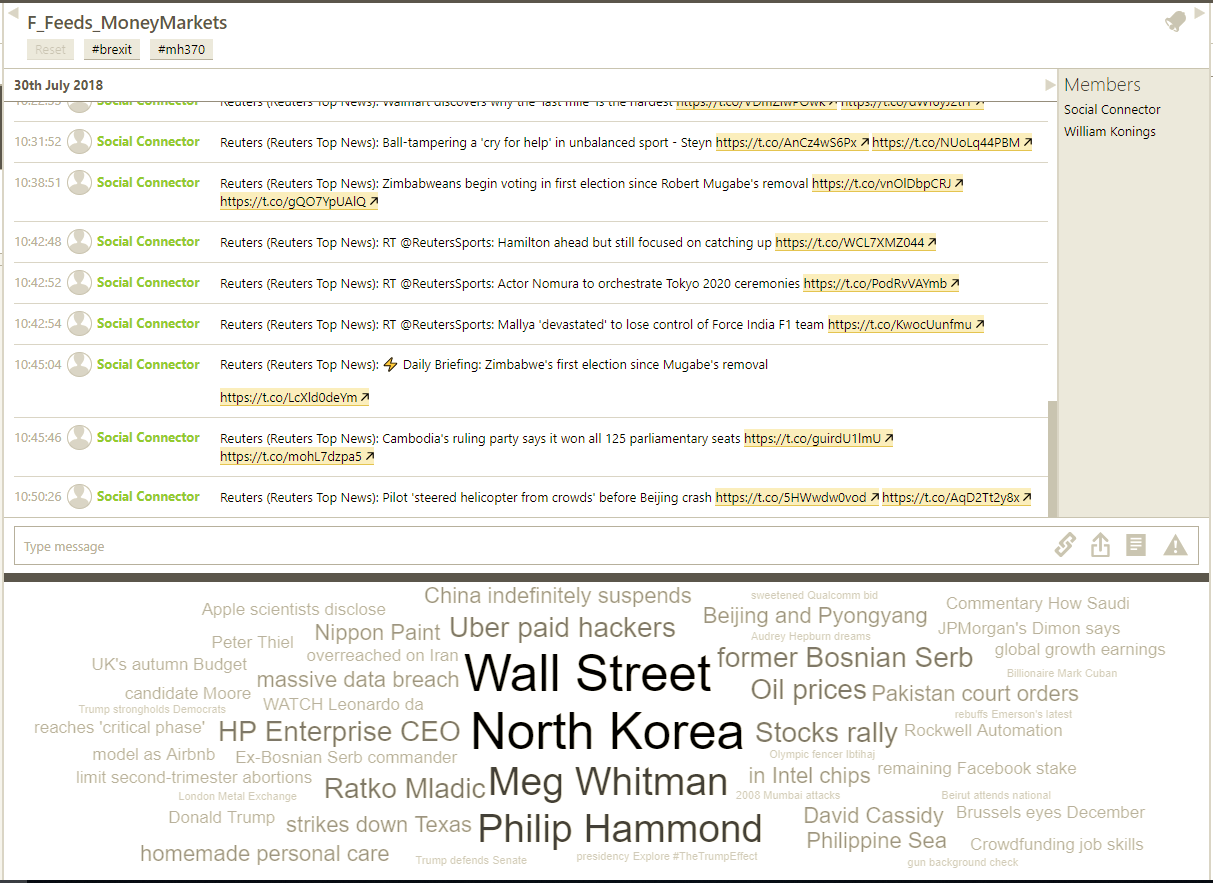Introducing a new way forward for chatbots in the enterprise space
TL;DR The rise of enterprise chatbots has had a tremendous impact on organisational productivity, the lack of a centralised management framework...
5 min read
Will Konings : Aug 23, 2018 6:46:15 PM

In this post we will walk you through a more technical perspective on chat bots, illustrate the business case using an office meeting room booking system as an example, provide insight to the types of enterprise chatbots and how they can be used effectively, discuss the benefit to the business and point you in the right direction to begin writing your own enterprise chatbots.
Following up on our earlier post about enterprise chatbots, we’re continuing our enterprise chatbot series to explore the different types of enterprise chatbots and highlight their value in a variety of use cases.
Before delving any further it’s important to define, concisely, what a chatbot is – there are varied definitions out there and depending on who you are or what you do this tends to differ. To the users a chatbot is essentially a conversational tool, you ask it a question, it gives you an answer- all within a chat window. This might capture what a chatbot does in essence, but is skewed to a user perspective. One of our lead developers at MindLink Software has offered a simplified breakdown so we can look at chatbots from a more technical angle.
A chatbot is an application that interfaces with users through the medium of natural language text, i.e. human conversation, in order to relay information from or perform actions on other applications (hardware or software). Chatbots may pump content into a conversation - for example informing you of news or weather; or they may be interactive to allow you to query or perform an action on a system.
The chatbot itself is another interface for software, the core business logic behind the chatbot is not concerned about how the query or action is made or how the response is shown to the user; it is up to the chatbot to coerce the natural language into a structure that the business logic can leverage. For example, an application may need a series of information about your query that can easily be retrieved from a graphical form with several fields, but a chatbot would instead ask you the questions and take your replies as the values for those fields. The same information the chatbot extracts from your natural language responses are coerced into structured data that the application business logic can process. Likewise, the structured data coming out of the business logic can be formulated into a natural language response.
As a result, a chatbot has the complexities of understanding natural language to get out the data, producing natural language responses that read as well as if a human had written them and then actually interacting with the systems that perform the business logic.

If we take a meeting room booking system as an example, the company likely already has systems that can query meeting rooms, get availability and conflicts and then reserve the meeting room. A chatbot has to be programmed to understand what steps are needed to book a meeting room - searching for meeting rooms in a certain date range, choose a time duration, select the number of attendees (to see if the room can fit everyone), check for conflicts, and potentially suggest alternative meeting rooms or times. After understanding the steps, it needs to understand the natural language. Then it needs to know how to take that natural language and call the right methods on the underlying meeting room booking system, it needs to take the responses and formulate them into a natural language response and remember everything that has happened so far so that it knows when it can make the booking. That is even before we have thought about cancellations and other scenarios.
It may seem as though a meeting room booking system isn’t that simple, but in reality, it is. A meeting room booking system represents a well-defined business workflow that has only a few steps - search with a query, choose some options, perform an action with those options and receive confirmation of the action. What this example is showing is not the whole story, so much goes on behind the scenes to drive that workflow. The beauty of a chatbot is that it makes it *seem* simple in the same way that a well-crafted graphical interface does, it removes the laborious manual processes and automates it by understanding the context.
The example above demonstrates the inner-workings of an office meeting room booking system. Moving forward and speaking to the theme of this post we will take a look at some prevalent use cases for business-facing, or rather enterprise chatbots.
The enterprise world is gearing up to chatbots as Business Insider reported some time ago, quoting directly from their article: 80% of business want chatbots by 2020. So which chatbots do they want? Well, the list below is just a start of some the chatbots already in play with a range of large organisations today.
Combining several bots in a single chatroom or channel can provide further business value. An example we employ is to have the Social Bot set to pull in news from various RSS sources in combination with the Tag Cloud bot hosted as an add-in to gauge/visualise the most important or most discussed news of the day!

Clicking on a topic, for example: Wall Street, will show more context.

This could be valuable for a financial trading firm to have a visual overview of the world’s current issues which may have a direct impact on trading. Rather than having to scour the web for updates, let the updates come to you in a dedicated chatroom.
Interested in the examples listed and illustrated above? Find out more here.
Chatbots will come to replace repetitive traditional workflows and bring them into the era of digital transformation. There are some rather obvious advantages to doing this, advantages revolving particularly around additional saving in terms of cost and time, chatbots also tackle some of the latent costs associated to traditional workflows.
Linking back to the earlier example of an office meeting room booking system, before the existence of chatbots a lot of the workflows and data transactions would have to be conducted by a member of office staff. Enter chatbots, processing the data as quickly as modern day hardware will allow, which speeds up those traditional workflows to the nth degree. This frees employees from the more laborious tasks.

Chatbots don’t: earn salaries, accrue a pension, need a desk, take holidays, and can’t get sick
The introduction of chatbots allows employees to focus on other tasks or remove now obsolete roles within teams reducing the overhead cost for firms in certain areas. Even when chatbots are offset against their own cost (hardware/maintenance/etc.), this still results in long-term cost savings, on top of a higher quality of service to the business users and ultimately, the customer.
You could code the chatbot directly against the desired platform, and there are plenty of resources out there on the web to do so. However, as we identified in our earlier post, there is a need for central governance around larger inventories of enterprise chatbots which starts from the foundation – how the chatbot is written.

To get you started writing your own chatbots against Skype for Business (or Lync) we recommend using the MindLink API – read more and sign up for a free trial.
Other options for getting up and running with Skype for Business chatbots include ready-made chatbots and custom chatbot development services which we offer as well. If you'd rather not write your own and go with our out-of-the-box or bespoke offering, find out more by downloading the MindLink Chatbots datasheet.

TL;DR The rise of enterprise chatbots has had a tremendous impact on organisational productivity, the lack of a centralised management framework...

In our earlier posts we touched upon the fact that chatbots aren’t that new. Yet there is novelty in their scope and application and with that,...

MindLink is pleased to announce the launch of MindLink Chatbots! Build your own, use a ready-made bot or have MindLink develop your custom enterprise...